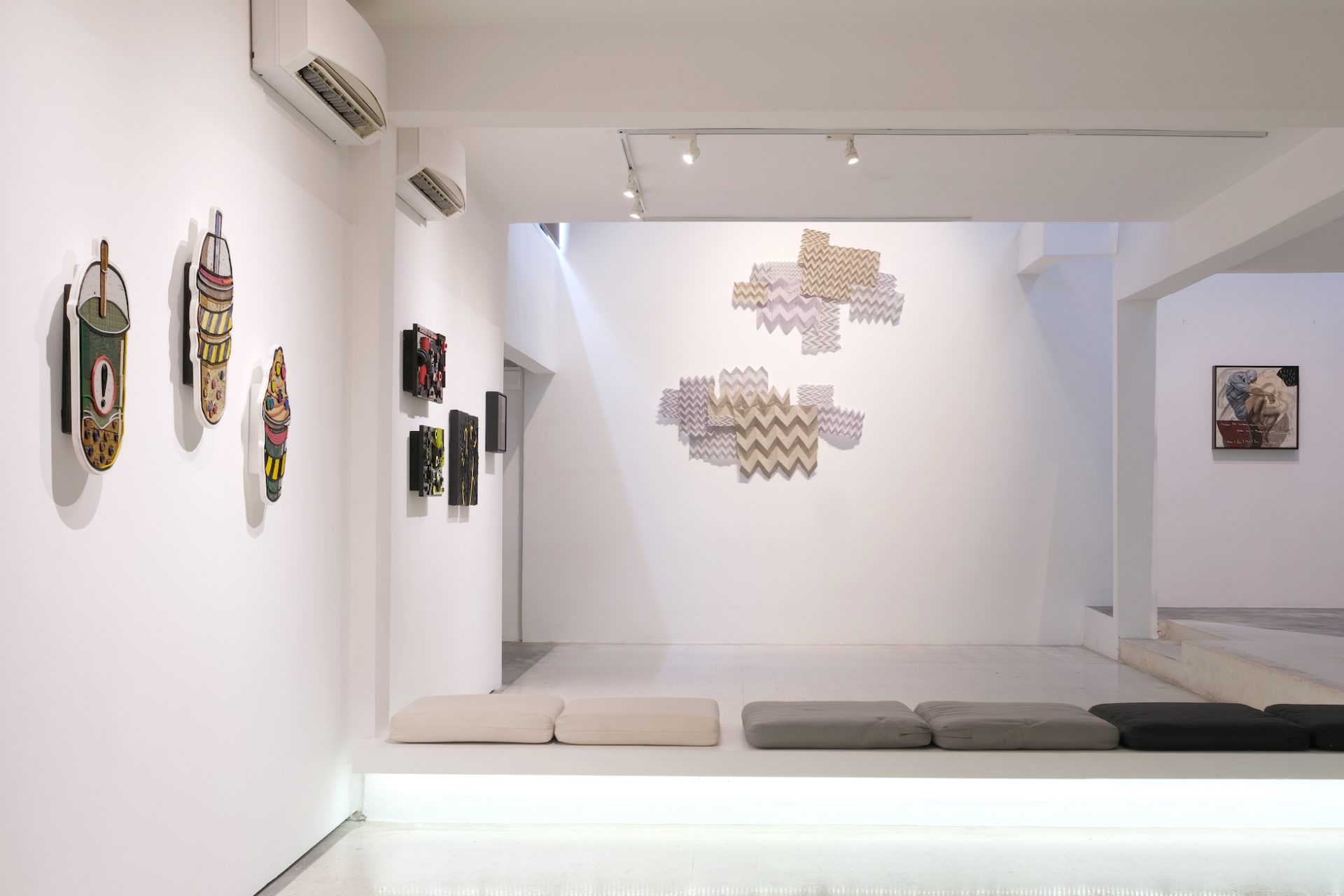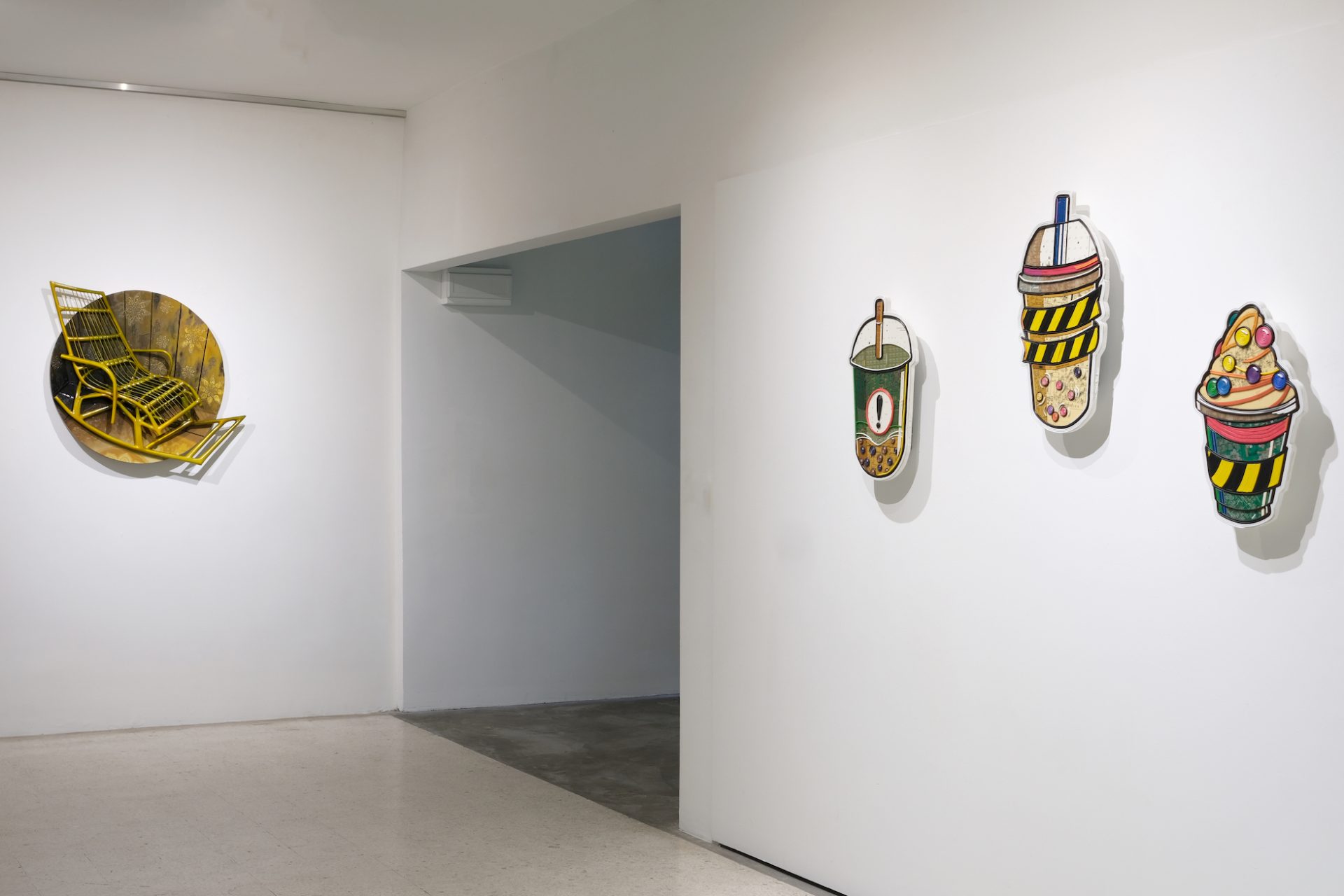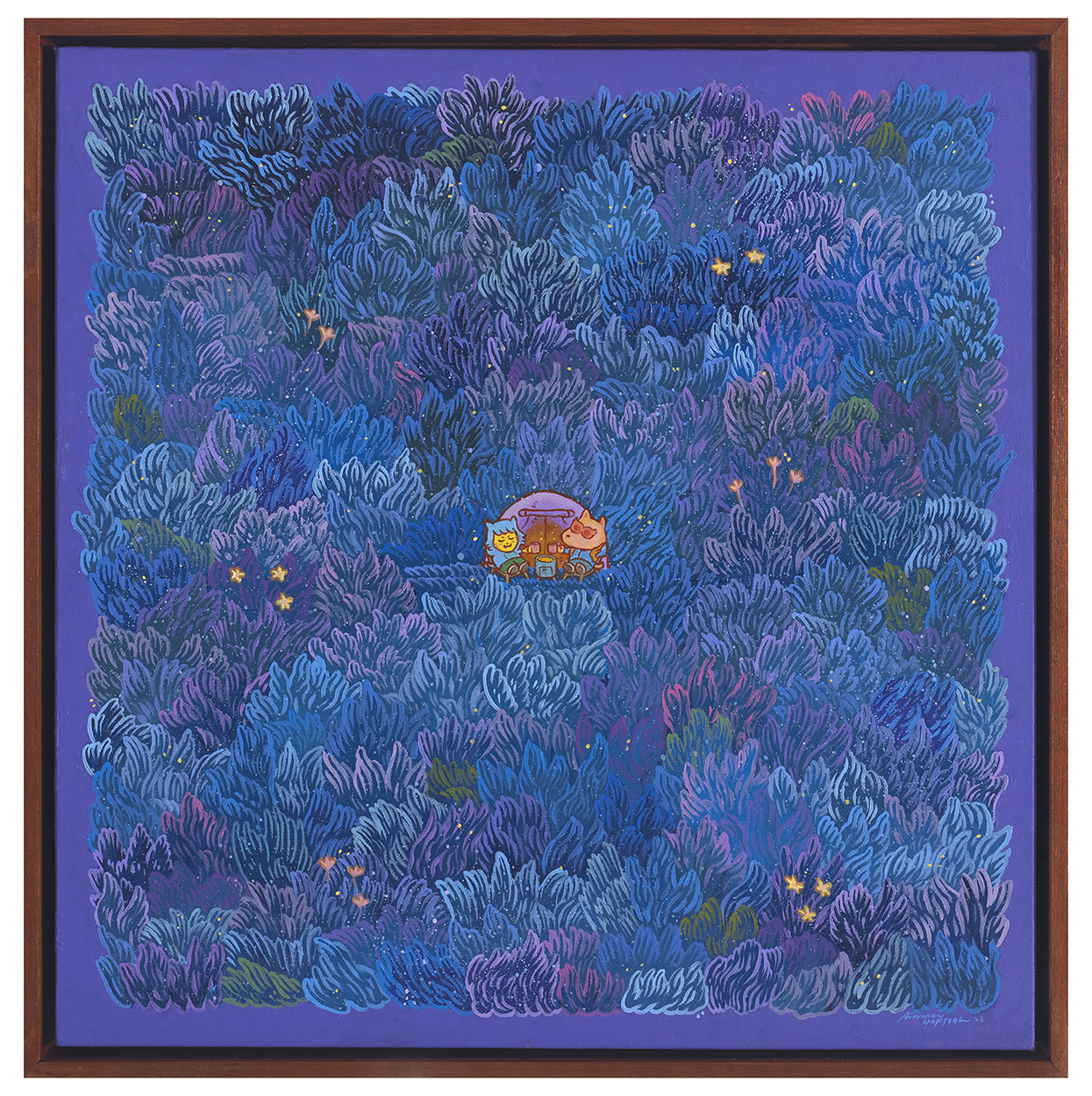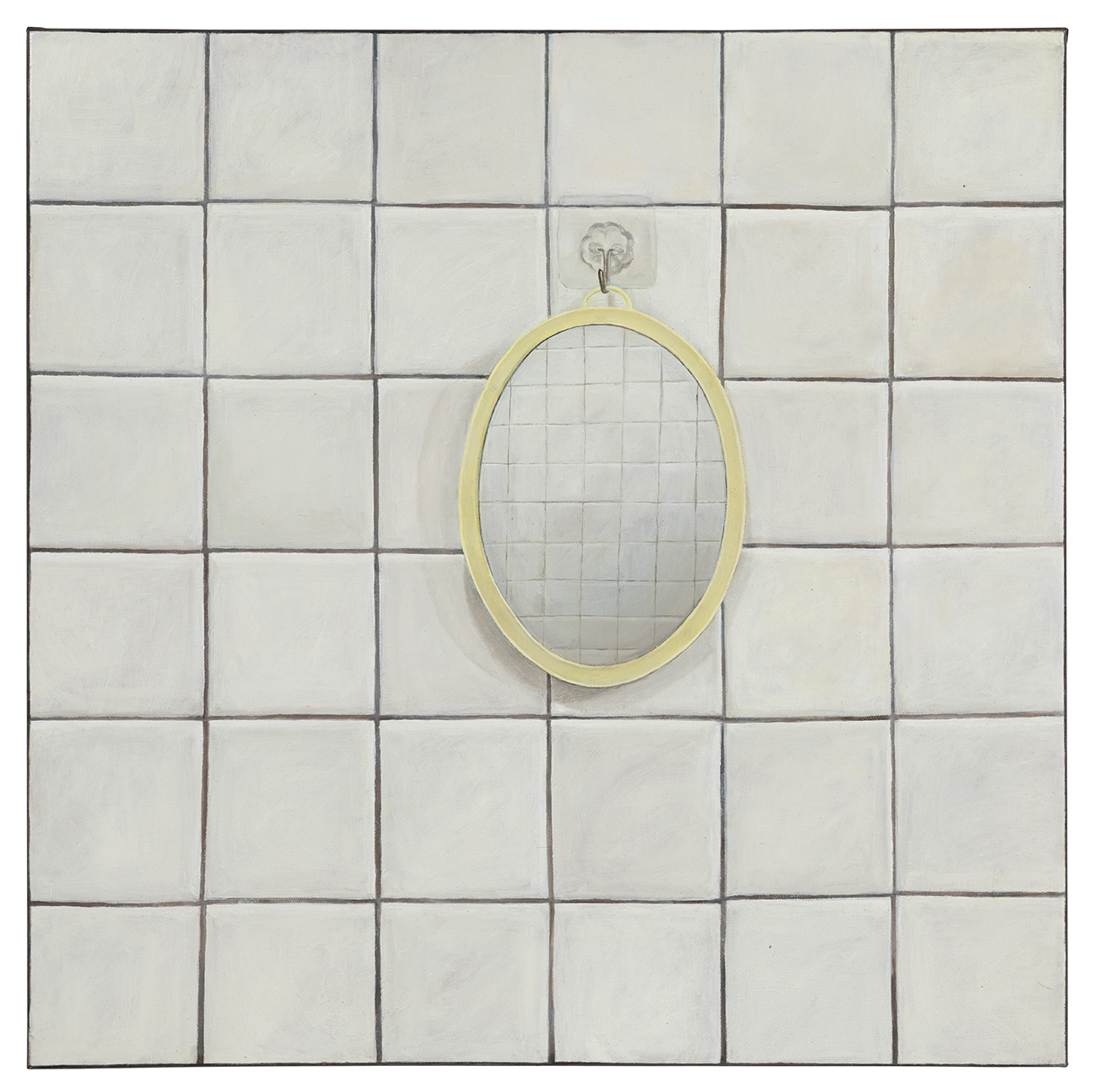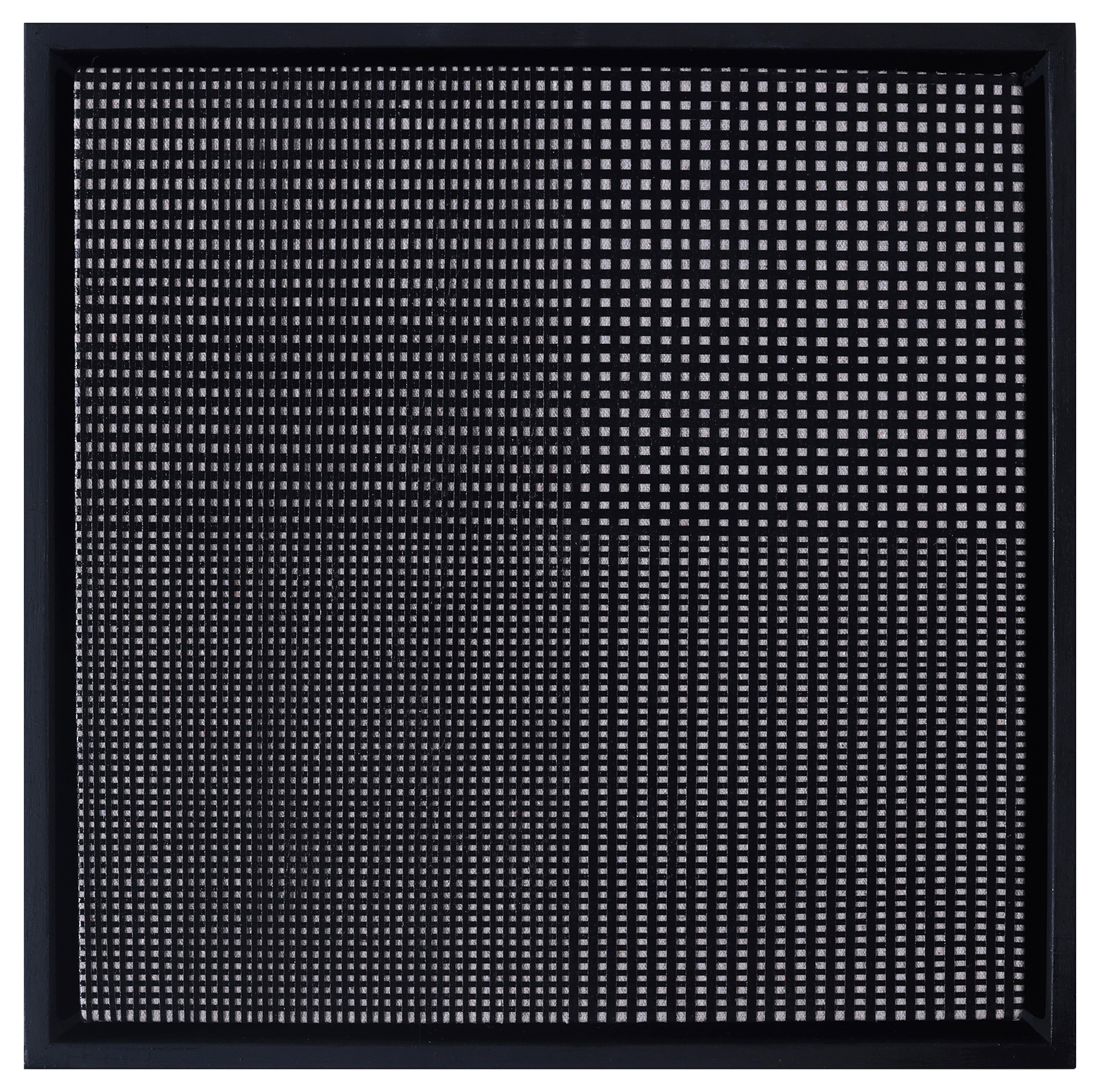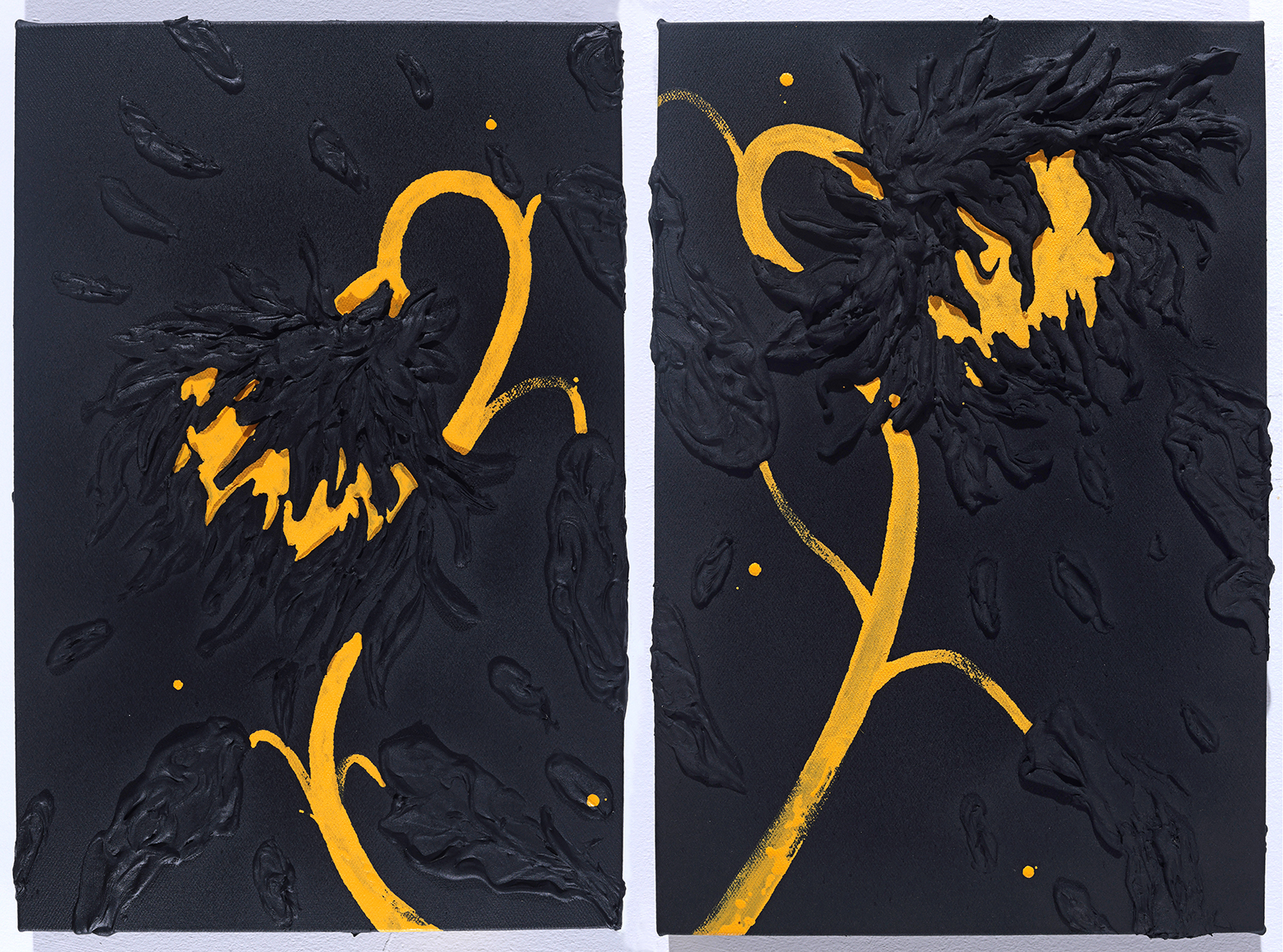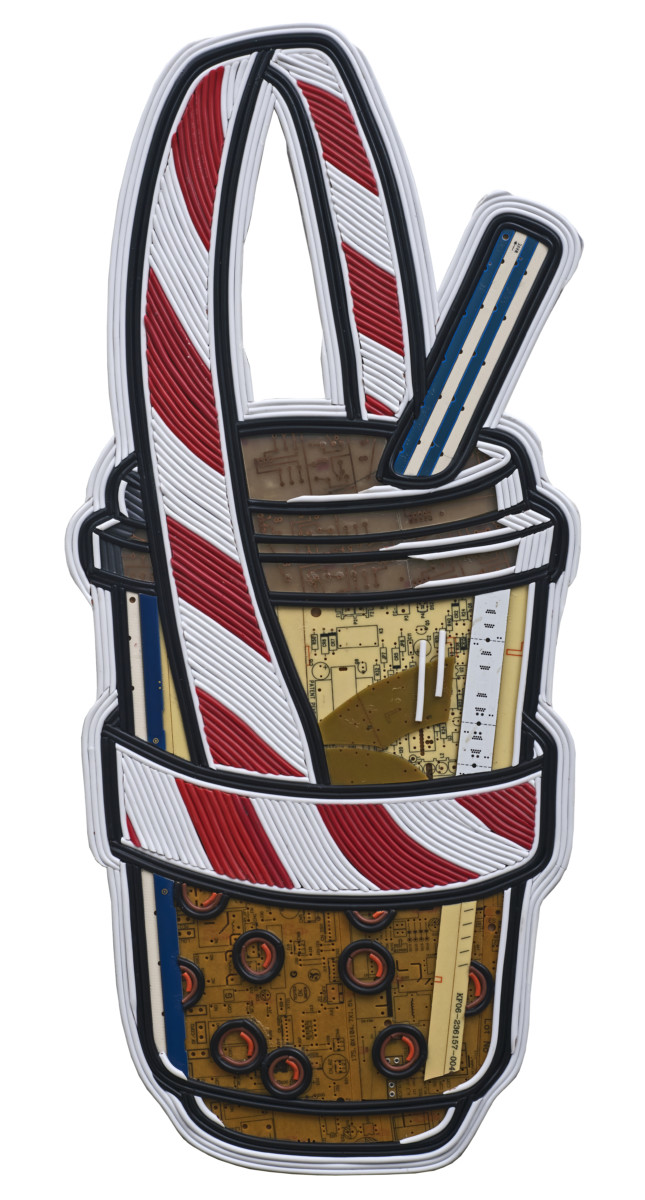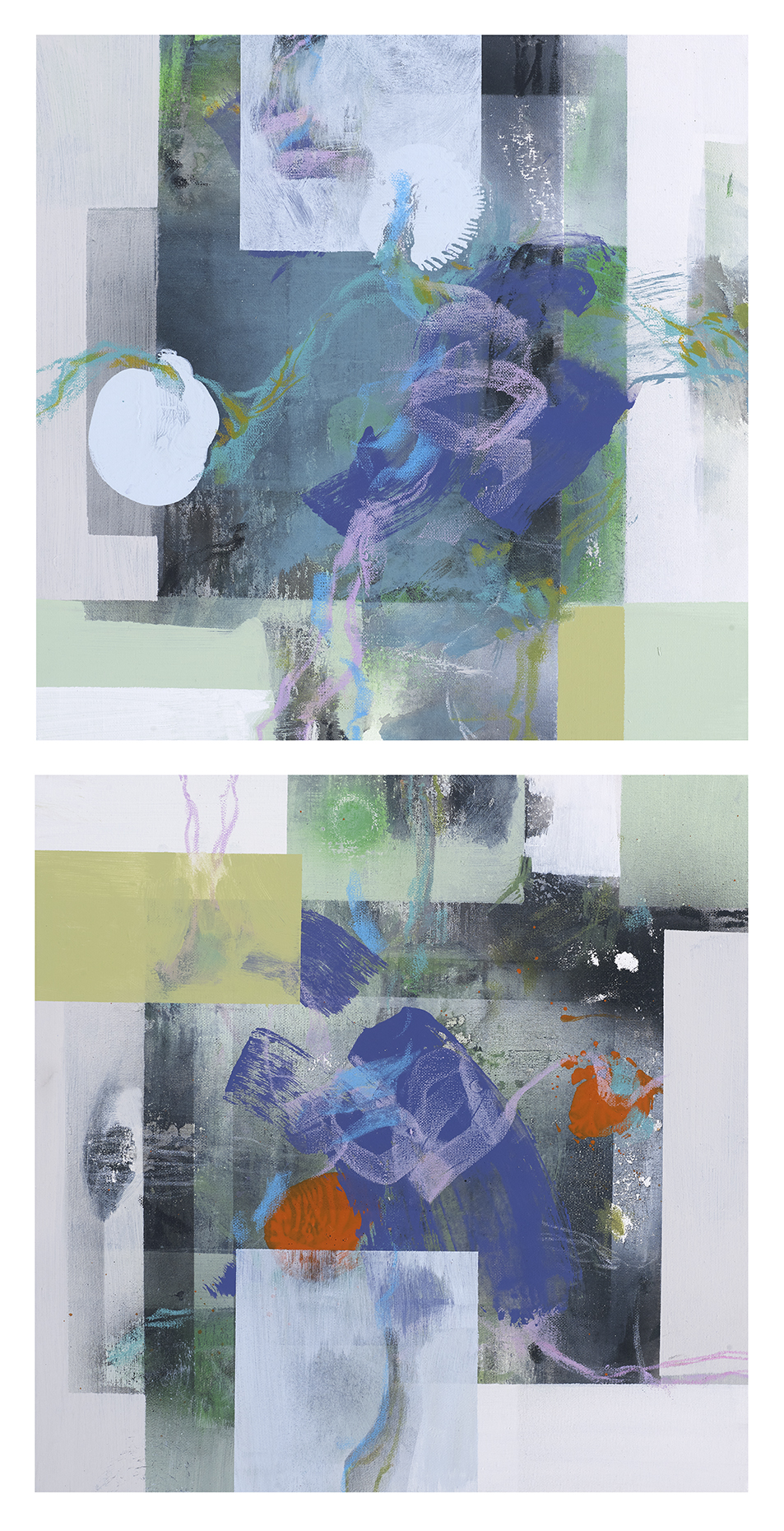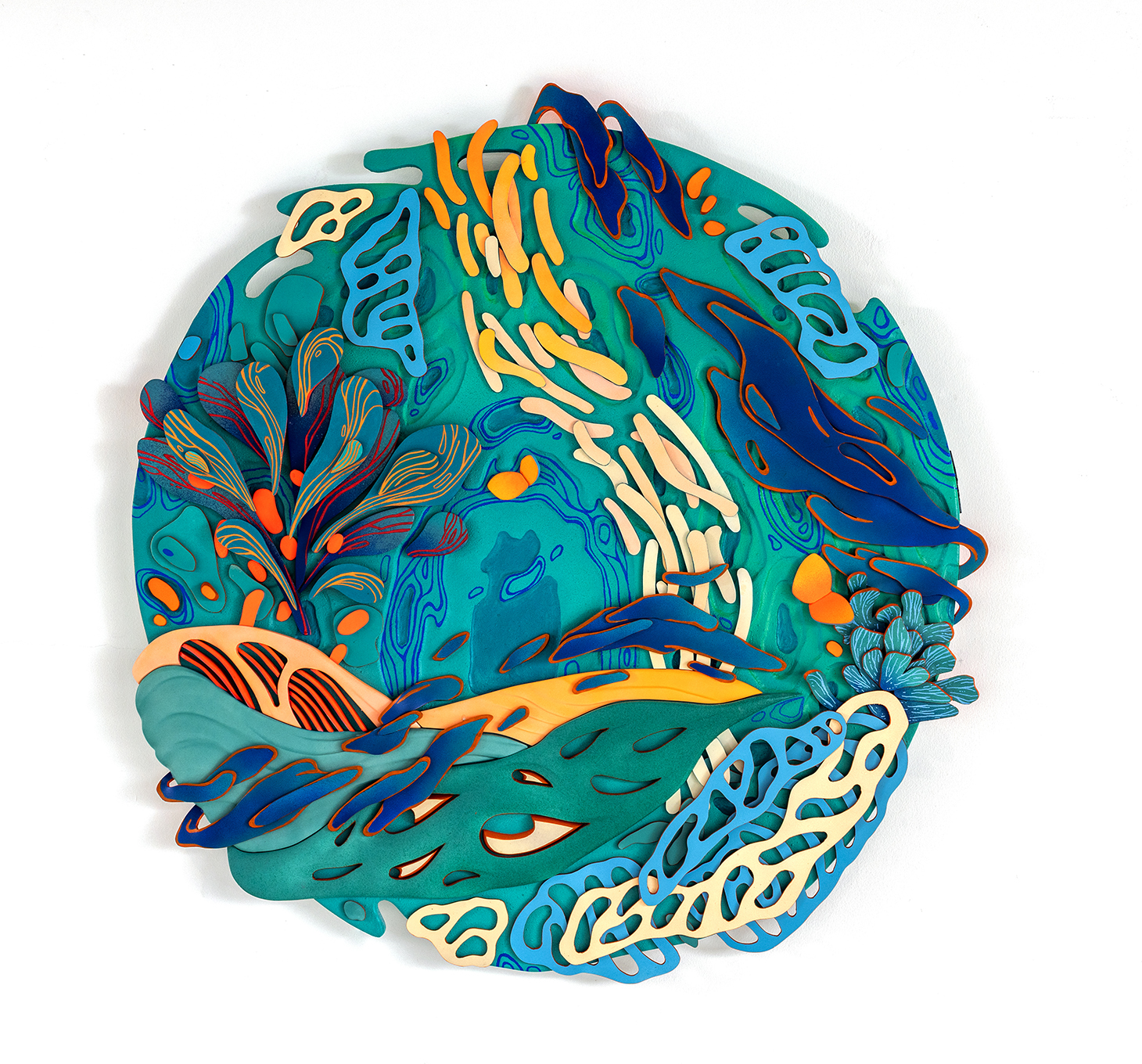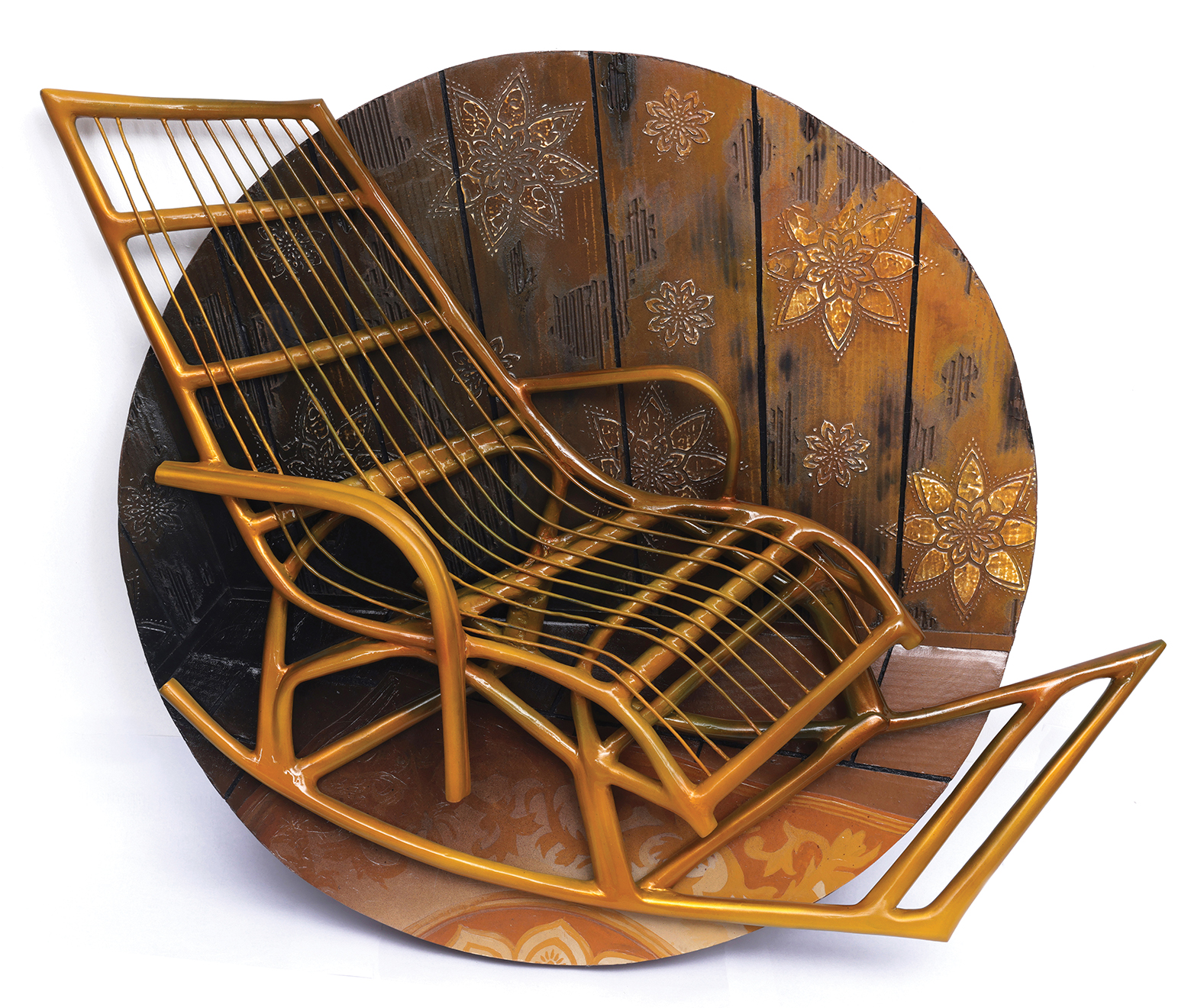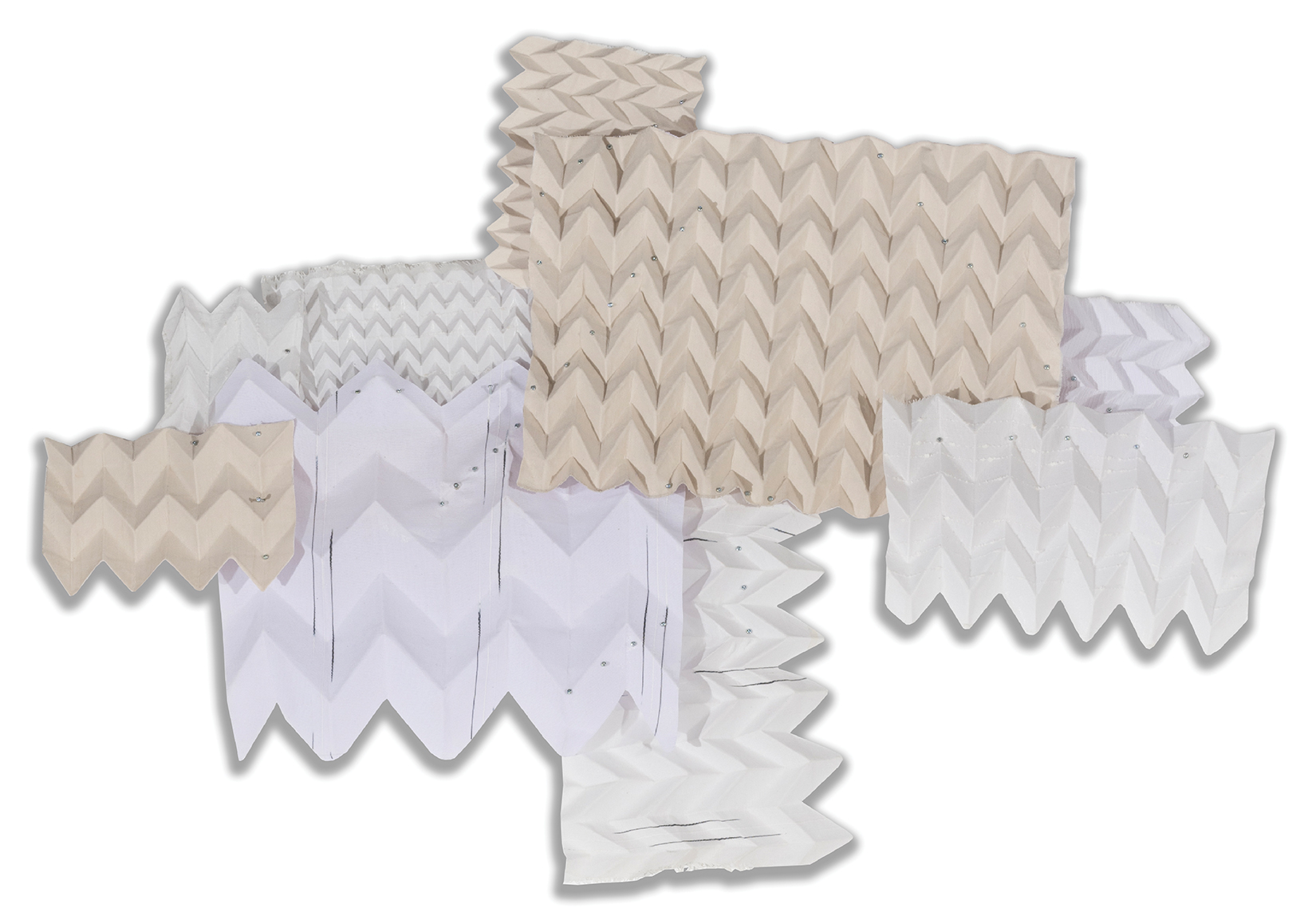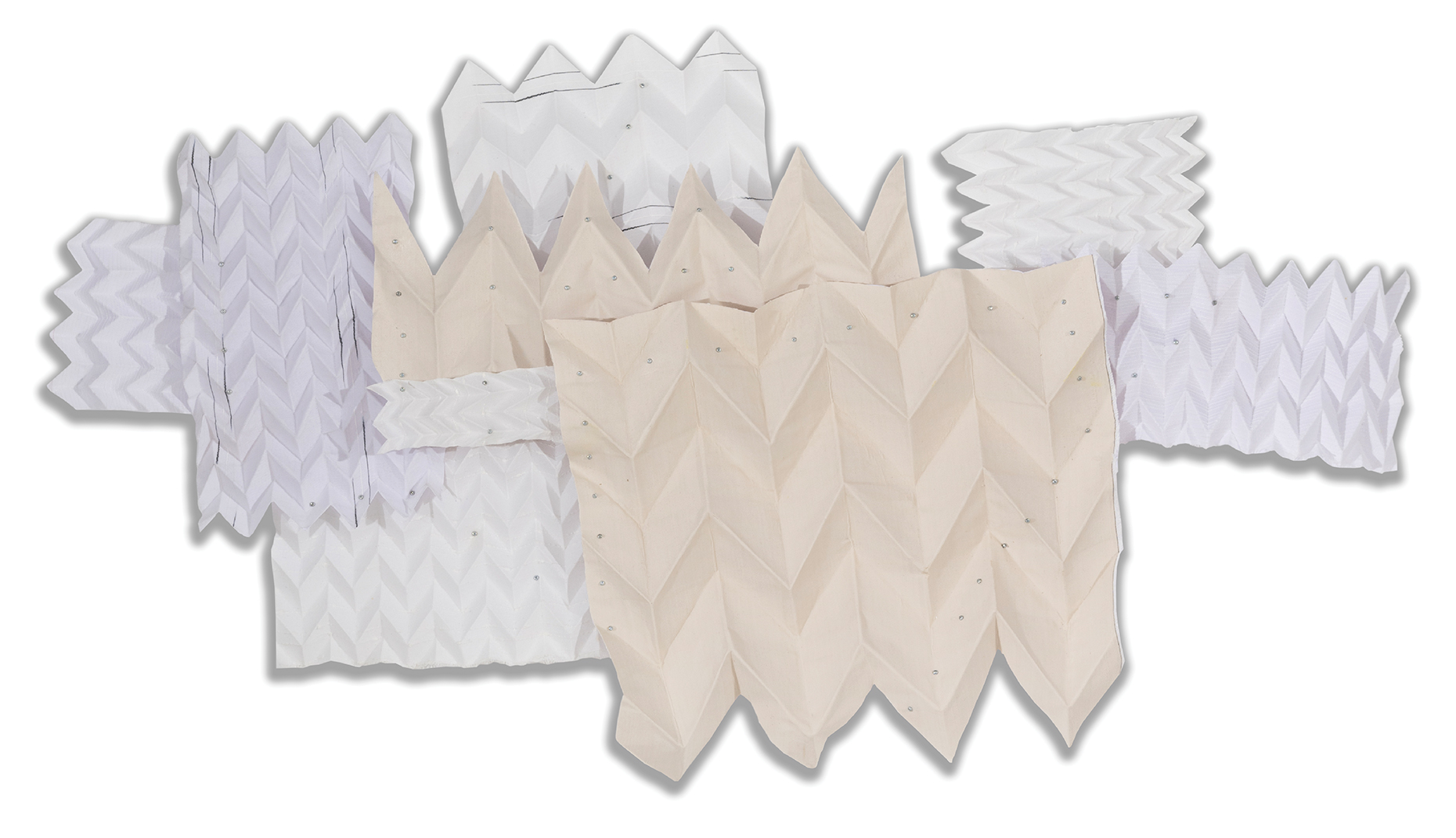Kecik
Group Exhibition:-
Aimman Hafizal
Amirul Md Noor
Anniketyni Madian
Atiqah Khairul Anuar
Falil Johari
Haafiz Shahimi
Nor Tijan Firdaus
Putra Nazri
Syafiq Hariz
Syafiq Kholid
Tetriana Ahmed Fauzi
13th October – 10th November 2023
Core Design Gallery, Subang Jaya
*Click on images to zoom in
Introduction
“Kecik” is a Malay word or in another form of keyboard message that translates to “small” or “little” in English. It is used to describe something that is diminutive in size. The word “kecik” can also be define in a different settings as such physical size, comparative statements, a form of endearment or metaphorical lenses depending on one person’s visions and understanding. In this exhibition, the artists are to envision artworks that defines “Kecik” or similarly to the form what is “Kecik” in their own way of stories.
Artist Statement
Aimman Hafizal, No Flowers For Me
Wandering through the flower garden with his heart heavy with disappointment, Apple, the ladybug, seeks solace amidst the petals that mirror his own desolation. The vibrant colors that once held promise now seem dull and lifeless, mirroring the state of his wounded emotions.
Despite his attempts to hide his sadness behind the smiling face of the Mickey Mouse mask, Apple cannot escape the weight of his past rejections. The mask becomes a symbol of his protective shield, shielding him from the outside world and allowing him to navigate through life without revealing his true vulnerability.
As Apple continues his somber journey, a faint glimmer of hope begins to stir within him. It whispers of a place where acceptance and understanding might be found, where the wounds of past rejections may find solace and healing. With a renewed determination, Apple spreads his wings and sets off in search of this elusive destination.
Aimman Hafizal, Sunday with Bestie
In my creative journey, I have always found inspiration in using well-known characters from movies and animations as a playful way to tell stories in my artwork. For this time, I decided to take a different approach and create my own original character, inspired from animals as a means of developing my own identity as an artist. This process allowed me to explore the realm of possibility without questioning the “how” and “why” of the story within my artwork, granting me the freedom to construct my very own universe.
In a delightful twist on the Malay proverb “Bagai Anjing dan Kucing,” which traditionally signifies constant fighting or arguing, I chose to portray the relationship between a dog and a cat in a positive light. These two characters, named Nilam and Dash, who are typically seen as adversaries, become unlikely friends in my work. They symbolize the healing power of friendship and find solace in the tranquil embrace of a peaceful forest during their weekend healing and camping adventures.
The peaceful forest serves as a backdrop for their shared experiences, representing a sanctuary where differences can be embraced, and the beauty of friendship can flourish. Within this serene setting, the dog and cat characters discover the joy of companionship, finding solace in nature’s embrace and the simple pleasures of camping. Through my artwork, I wish to convey the message that even the most unlikely friendships can bring comfort, support, and harmony.
Anniketyni Madian, Fragments
Anniketyni developed a strong signature that set her apart as she experiemnted with a stylisation of the patterns found in “Pua Kumbu”. A traditional waft textile, woven exclusively by the women of the Iban tribe. “Pua Kumbu” merges motifs and designs drawn from the extensive canon of oral Iban literature with personal insights, to create rich tapestries often reserved for ceremony. Clear parallels exist between the production of “Pua Kumbu” and Anniketyni’s practice: the utilastion of historical pattern and narrative combined with personal flair, exemplified by the sharp, graphic line patterns are pared into, in an artistry that cements their maker’s position within her society – whether that be in an Iban tribe or the Malaysian contemporary art world.
Amirul Md Noor, Waiting For Qucu
I have seen fear, anxiety, overwhelming response and persona that created this dreadful environment which most likely influences human behaviour to be confined with questions. My work was inspired by the hideous side of human beings who shares their visions of horrendous environments and any related current events. Studying the corresponded cases of humanity in relation towards the so called human behaviour had triggered me to portray what is beauty that we had always talked about. I have always wonder what can we show and what can human figuratives help to create the expression of beauty and thoughtfulness. Taken figures of renaissance sculptures to transact the beauty of body positivity and personally, as a painter the quotes from Francis Bacon “The best part of beauty is that no picture can express” makes me believe that human’s are special in their own way and this expression of mine hope to gain motivation and inspiration by the positivity delightedness.
Atiqah Khairul Anuar, Reflection
The definition of reflection can be talked in various context. Could be refer as introspection and self-awareness, physical phenomenon of light bounce in different directions or even in a serious thought and consideration. In a crucial situation, one may look as a self awareness towards undefined future or maybe just emptily looking into a small mirror with a wider background but may also be the reflection of the opposite wall. Seems very empty. With many speculations I guess.
Falil Johari, To ERR
At the time of making this work, I wasn’t fully aware of the quote historical context (re: a poem titled An Essay on Criticism by Alexander Pope). The full phrase, “To Err” is Human; To Forgive, Divine, discusses an intriguing insight of not to forget our humanity when criticising others (in the context’s case, had more to do with advising critics/writers/poets. The phrase was popularised during the rule of Roman emperor Augustus, a time when poetry and art flourished).
Although I usually remember the phrase in a literal sense, I find it relatable to my current art practice.
To clarify, I have a process that I regard carelessly before — the use of tapes for my paintings that could’ve been something of use, if I knew how to use it then. “To Err” in summary is a self-criticism about how things could be unpredictably wasteful when creating, that although in the act itself are allowed errors, there should be also a room to ‘forgive’ those errors. This piece, essentially, is the start of a small series that is experimental in nature, but conscious in practice. It is the notion of using an ordinary medium as what it is and extending the potential of it.
Haafiz Shahimi, Sunflower
The carbon black and bright ‘Lamborghini Yellow’ colour were the main components to be infused with the image of sunflower life cycle. It is to depicted the main development stages of sunflower growth. From seed to sprout, then growth to adult with blooming flower, down to the falls and finally harvesting – which the flower eventually dried out and the petals goes away with the wind and the seed will fall so it can germinate again-regrowth. Life is a straight line with time as a measurement of important event during life cycle, it is joy, sadness, pain,wealth and family. It is the time to be remembered and perished. So be good to it.
Artist Statement
Nor Tijan Firdaus, Caution II, III, V
In my artistic practice, I strive to shed light on pressing environmental issues and inspire viewers to reconsider their impact on the world around them.
“Caution Series” Taking inspiration from the popularity of boba drinks and the subsequent environmental consequences, I constructed a plastic cup drink with caution tape encircling it. The intention behind this piece is to draw attention to the alarming amount of waste generated by the boba craze, specifically the single-use plastic cups, lids, and straws that pollute our land, waterways, and ecosystems.
The juxtaposition of the caution tape against the enticing yet wasteful allure of the boba drink serves as a metaphorical warning, urging viewers, particularly the younger generation, to become more conscious of their consumption habits and the potential harm they may unknowingly inflict upon our environment. It acts as a wake-up call, compelling individuals to recognize the responsibility they hold in mitigating ecological damage.
By employing electronic waste as a medium, I not only highlight the issue of boba-related waste but also underscore the broader concerns surrounding electronic waste disposal and proper recycling practices. As society’s reliance on technology continues to grow, so does the amount of discarded electronic devices that harm both our environment and personal health.
Through my art,I do really hope that it can seek to evoke an emotional response and create a space for dialogue. I invite viewers to reflect upon their own habits, engage in critical discussions about the consequences of our collective actions, and ultimately inspire them to enact positive change in their daily lives.
Putra Nazri, Composition A
“…jendela merupakan penghubung antara realiti dan fantasi. Dimana menerusi jendela, saya dapat lihat keadaan, perilaku serta budaya yang ada diluar sana. Lalu saya terjemahkan apa yang saya lihat menerusi karya-karya saya..”
Basically, when we talk about the idea, I’m personally interested in mark making. It is created by different scratches, line, pattern and strokes, whether it is a planned or not. And maybe that’s why my artwork leans more towards into abstract style. It can be loose and gestural, or controlled and neat, and then form a sign that can be used in creating a purely abstract composition. And that’s where the space exists. I usually use mark-making and gestural qualities to express my experience, or can be said life journey by observation and evaluating what is happening around. Through communication, getting to know, or visiting a place, i learn and observe culture, behavior or atmosphere and that may be quite new for me to adapt to. It is an interesting process and an valuable experience. “JENDELA” represent as a window. For me, it is a connection between individual sight and surrounding. Through this JENDELA, we can see environment, allow sunlight to enter and illuminate the space, and many more. So I use this idea, as a symbol and to reflect what I observe, experiences and lessons in life.
Talk about content, from that process, I decide to execute what has been captured from my own “Jendela” and express it through the variety of lines, shape and gestural qualities in forming an interesting visual language according to my understanding. I embodied and created an intimate space between surroundings and feelings, by using the approach of geometric and organic forms, and gestural elements to create the value of balance in the artwork. I often using a juxtapose of surroundings and feelings for rhetorical effect, to flesh out a character of gestural qualities by contrasting this traits against another, and bring out that mood from enclosed space (heart). Sometimes, i’ll rearrange and come out with a gestural qualities through different stroke, line, shape or color to represent the mood and all my observation during that time. I want to play a shape of spaces in the viewer’s eyes.
When it goes to the context, sometimes in life, it was the best of times, and it was the worst of times. It was the season of Light, and season of Darkness. Spring of hope, and winter of despair. We must realize and faced all of them to create a balance of living. It is a long journey, and must have its own obstacles, so that we can improve the way we think and continue to grow into someone who is personally strong and enthusiastic in living life. This is affected all of us and its either weaken or make us stronger. So the combination of these two elements, I try to express them into the artwork.
I hope, through this artworks, let it play in your eyes and see how the paintings affect you. It’s up to viewers to determine the story. It will be such a meaningful art piece when you can’t take your eyes off the art piece. It’s all about feelings.
Syafiq Kholid, Nuansa Bersila
The connection between furniture and the way that people interact with each other and their environment around them allows me to explore these interactions by combining sculpture and reusable materials. By restricting my focus to only chair, I can use the chair form as a representation for a sense of place and from their utility they serve as a universal sign of comfort and rest.
People would see me as a creative persona since early school as a boy full of ideas, frivolous and unbothered but now here i am, a grown up man whose ideas still lingers uncertain and with many dreams and hope yet to be achieved whilst laid back restlessly on a rattan chair.
Sitting on it while watching the others around me quietly; either surrounding with silence or laughter of families, feeling the warm of the day or the chill cold air, taking a rest after a long day or just unwind with nothing in mind—a personal space of mine i wouldn’t mind to share.
Some might assume i am slackening despite of the chaos but truthfully, “It’s when I’m at peace with myself that I’m most inspired.”
Syafiq Hariz, Hadam
This artwork is inspired by the Malay proverb “salt falls into water” (garam jatuh di air). This phrase embodies the idea that knowledge or wisdom is easily absorbed and quickly understood, much like how salt dissolves effortlessly into water. I aim to capture the essence of this proverb by creating a visually striking and intricate illustration that stylizes elements from nature. The layers of illustration represent the different aspects of life, each one interconnected and working together seamlessly, just like how the proverb suggests that knowledge should be easily absorbed and understood
The use of vibrant colors and delicate details in my artwork further emphasizes the idea of fluidity and harmony, highlighting the importance of understanding and accepting the natural flow of life. By exploring the relationship between nature and the human experience, I hope to create a sense of balance and tranquility that resonates with viewers.
Through my artwork, I invite viewers to reflect on the power of knowledge and its ability to bring ease and understanding to our lives. Just as salt dissolves effortlessly into water, may we too embrace the wisdom of the Malay proverb and allow it to nourish our minds and souls.
Tetriana Ahmed Fauzi, Of One’s Own
Layers of squarish and jagged contour convey the rigidness of one’s trying to control and preside over an organic and natural state of land. The land are symbolized through semi sheer and textured fabric which are soft yet strong and enduring.
